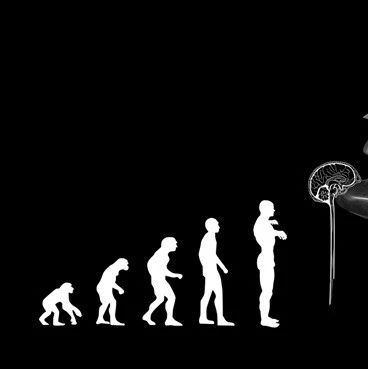导读:上海交通大学附属第六医院等处的研究人员发文称,发现了组蛋白/ 非组蛋白去乙酰化酶SIRT1(沉默调节因子1)在非酒精性脂肪肝和血管新生中的新机制,突出了表观遗传学在代谢相关性疾病中的重要地位。

SIRT1在血管新生中发挥作用
来自中山大学附属第三医院,上海交通大学附属第六医院等处的研究人员发表了题为“Angiogenic Deficiency and Adipose Tissue Dysfunction Are Associated with Macrophage Malfunction in SIRT1-/- Mice”的文章,发现了组蛋白/ 非组蛋白去乙酰化酶SIRT1(沉默调节因子1)在非酒精性脂肪肝和血管新生中的新机制,突出了表观遗传学在代谢相关性疾病中的重要地位,其相关结果均发表在美国最老牌、权威的内分泌学杂志Endocrinology (5年平均影响因子5.103)。
这项研究由中山大学内分泌与代谢病学科带头人翁建平教授领导完成,第一作者是徐芬博士,其曾于2007-2009年期间获国家留学基金委“国家建设高水平大学公派留学生项目”资助,在美国路易斯安娜州立大学Pennington Biomedical Research Center叶建平教授实验室以联合培养博士的身份学习两年。这项研究得到了教育部“长江学者和创新团队发展计划”创新团队项目(PCSIRT 0947)、国家杰出青年科学基金(81025005)、国家留学基金委及美国NIH(DK068036、DK085495)的资助。
SIRT1(sirtuin1)是一种保守的NAD+ ( 烟酰腺嘌呤二核苷酸) 依赖的组蛋白/ 非组蛋白去乙酰基酶,属于表观遗传学的一部分。它在DNA 损伤修复、细胞周期控制、抑制细胞凋亡、有机体的能量代谢、线粒体功能保护、炎症反应、抵抗氧化应激和延长细胞寿命方面起着重要作用。
在之前的研究中,徐芬博士在叶建平教授指导下首次发现SIRT1 在肝脏脂质代谢作用中的一些新机制,报道了在SIRT1活性部分缺失的情况下,正常饮食即可导致SIRT1+/-小鼠发生肝脏脂肪变性,其可能机制为SIRT1+/-小鼠肝脏的脂质合成的增加,且SIRT1+/-小鼠脂肪组织和肝脏中的炎症增强,导致脂肪异位沉积在肝脏。该文发表在2010年的Endocrinology (Endocrinology. 2010 Jun;151(6):2504-14.)。该结果为SIRT1成为非酒精性脂肪肝等代谢性疾病的防治新靶点提供了新的思路。
在最新这篇文章中,研究人员在对脂肪组织的微循环研究中发现,SIRT1的全敲除导致SIRT1-/-小鼠脂肪组织中血管生成不足,使得脂肪细胞的分化受阻,而这一作用是通过脂肪组织中的巨噬细胞部分介导的。这些结果证实了SIRT1在血管新生及炎症中的重要作用,为探讨SIRT1在微循环中的作用提供了新的观点。

 Angiogenic Deficiency and Adipose Tissue Dysfunction Are Associated with Macrophage Malfunction in SIRT1−/− Mice
Angiogenic Deficiency and Adipose Tissue Dysfunction Are Associated with Macrophage Malfunction in SIRT1−/− Mice
Fen Xu, David Burk, Zhanguo Gao, Jun Yin, Xia Zhang, Jianping Weng and Jianping Ye
The histone deacetylase sirtuin 1 (SIRT1) inhibits adipocyte differentiation and suppresses inflammation by targeting the transcription factors peroxisome proliferator-activated receptor γ and nuclear factor κB. Although this suggests that adiposity and inflammation should be enhanced when SIRT1 activity is inactivated in the body, this hypothesis has not been tested in SIRT1 null (SIRT1−/−) mice. In this study, we addressed this issue by investigating the adipose tissue in SIRT1−/− mice. Compared with their wild-type littermates, SIRT1 null mice exhibited a significant reduction in body weight. In adipose tissue, the average size of adipocytes was smaller, the content of extracellular matrix was lower, adiponectin and leptin were expressed at 60% of normal level, and adipocyte differentiation was reduced. All of these changes were observed with a 50% reduction in capillary density that was determined using a three-dimensional imaging technique. Except for vascular endothelial growth factor, the expression of several angiogenic factors (Pdgf, Hgf, endothelin, apelin, and Tgf-β) was reduced by about 50%. Macrophage infiltration and inflammatory cytokine expression were 70% less in the adipose tissue of null mice and macrophage differentiation was significantly inhibited in SIRT1−/− mouse embryonic fibroblasts in vitro. In wild-type mice, macrophage deletion led to a reduction in vascular density. These data suggest that SIRT1 controls adipose tissue function through regulation of angiogenesis, whose deficiency is associated with macrophage malfunction in SIRT1−/− mice. The study supports the concept that inflammation regulates angiogenesis in the adipose tissue.
文献链接:https://endo.endojournals.org/content/early/2012/02/01/en.2011-1667.abstract







